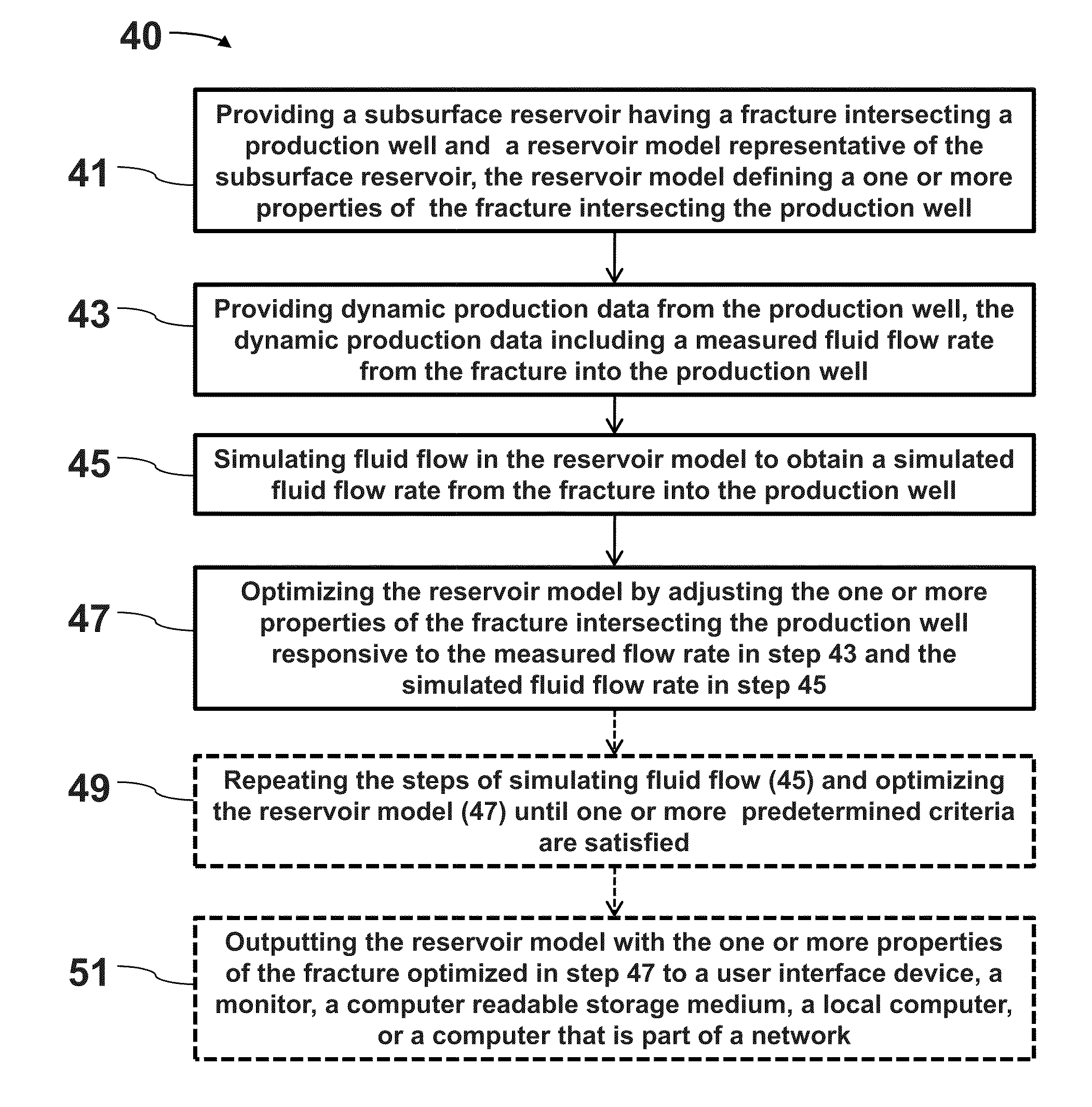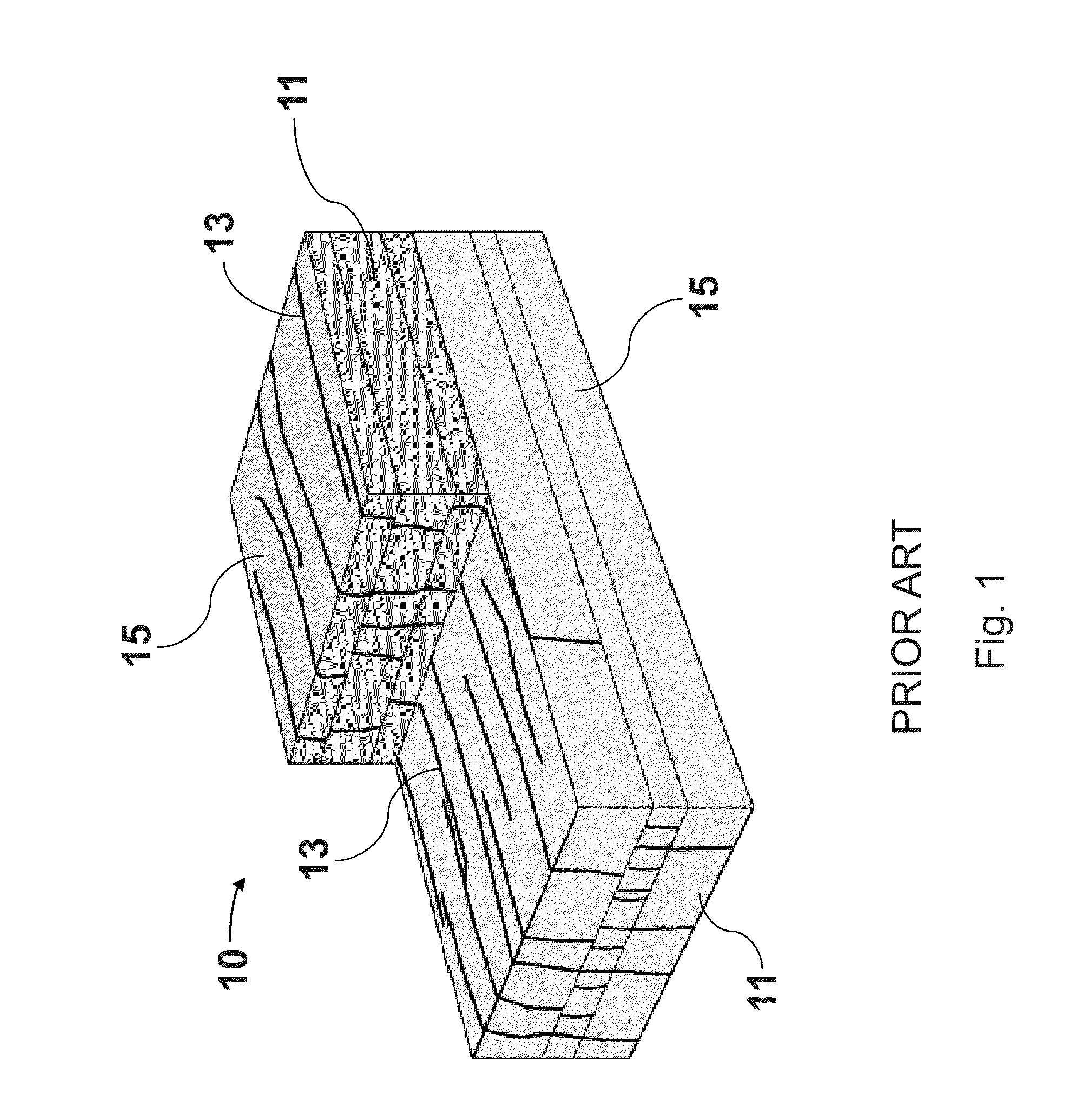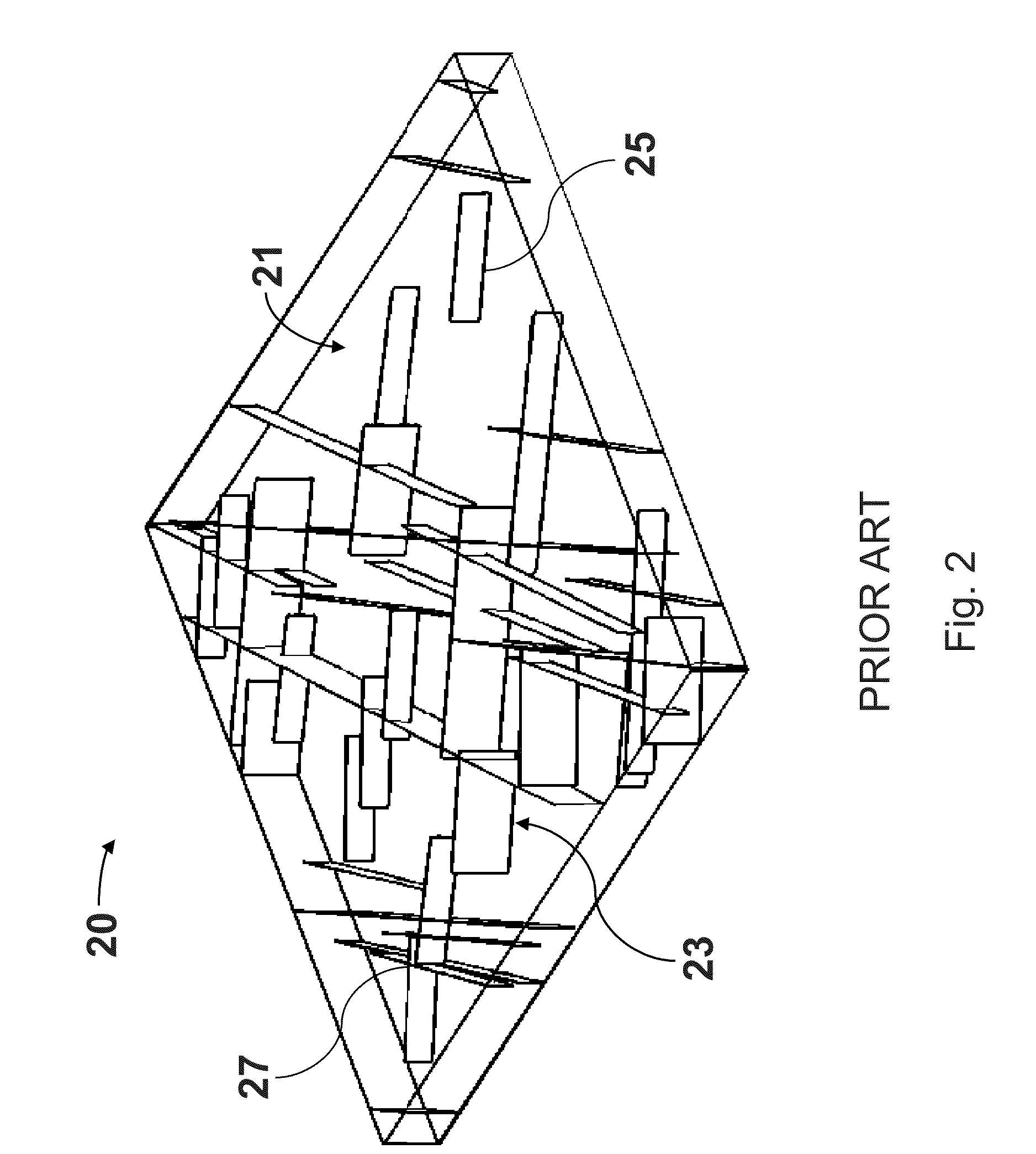System and method for characterizing fractures in a subsurface reservoir
a subsurface reservoir and fracture technology, applied in seismology for waterlogging, borehole/well accessories, instruments, etc., can solve the problems of large amount of effort, significant affecting well productivity and recovery efficiency, and unique and specialized challenges, so as to optimize fracture properties
- Summary
- Abstract
- Description
- Claims
- Application Information
AI Technical Summary
Benefits of technology
Problems solved by technology
Method used
Image
Examples
example 1
[0074]FIG. 6 shows a simple example presented to demonstrate the aforementioned system and method. A well is provided that has an upper and lower fracture zone. Production logging tool data from the well shows a response of 180 barrels per day in the upper fracture zone and a response of 240 barrels per day in the lower fracture zone. To simulate the flow rates for this well model, an initial fracture half length of 350 feet is assigned to each of these fractures. Based on these fracture lengths the simulated well model predicts a flow rate of 210 barrels per day from each zone.
[0075]The fracture lengths are then adjusted based on the difference between the simulated flow rates and measured dynamic flow rates using Equation 3. Using a value of one for the n_exp in Equation 3, the fracture length in the upper fracture zone is calculated to a reduced length of 300 feet (180 b / d / 210 b / d*350 ft=300 ft). The fracture length in the lower fracture zone is calculated to an increased length ...
example 2
[0077]This example demonstrates the system and method disclosed herein and specifically helps illustrate how pressure data can be used to further constrain fracture sizes by providing a more accurate estimate of the gridblock permeability. In addition, this example showcases how the uncertainty range of possible fracture sizes can be ascertained by changing some uncertain parameters and rerunning the routine.
[0078]FIG. 8 shows dynamic production logging tool data for an actual well that was recorded about three months after the well was placed online. In FIG. 8, the horizontal bars show the location and quantity of wellbore inflow. In particular, there are five identified fracture zones that show sufficient increased fluid flow.
[0079]A Fullbore MicroImager (FMI) electrical resistivity image of the well provides a log of fracture locations, orientations, and apertures, which is shown in the table below:
DIPDipDepthMagnitudeAzimuthAperture(ft)(degrees)(degrees)(mm)13045309.0779.3520→13...
example 3
[0089]FIG. 11 shows production logging tool data for a well in a more geologically complex reservoir. In this example, the model has more fractures, and the porosity and permeability are extracted from a full field model. The PLT data was recorded about 500 days after the well came online. On the right side of the figure, there are a number of horizontal bars that indicate the location of fracture zones at which fluid flow is produced. The lengths of the horizontal bars show how much fluid flow is coming in at each fracture zone. There are twelve zones that show some inflow or increase in fluid flow. However, the production in two of the fracture zones is very little. Since these two fracture zones are in close proximity to more prolific fracture zones, the flow from these two zones will be included with the neighboring more prolific fractured zones. Therefore, the fracture sizes will only be determined in 10 zones during simulation.
[0090]Similar to the previous example, there are m...
PUM
 Login to View More
Login to View More Abstract
Description
Claims
Application Information
 Login to View More
Login to View More - R&D
- Intellectual Property
- Life Sciences
- Materials
- Tech Scout
- Unparalleled Data Quality
- Higher Quality Content
- 60% Fewer Hallucinations
Browse by: Latest US Patents, China's latest patents, Technical Efficacy Thesaurus, Application Domain, Technology Topic, Popular Technical Reports.
© 2025 PatSnap. All rights reserved.Legal|Privacy policy|Modern Slavery Act Transparency Statement|Sitemap|About US| Contact US: help@patsnap.com



